Culture Insider: The evolution of pillows in ancient China
By: By Bi Nan

Culture Insider: The evolution of pillows in ancient China

A Song Dynasty ceramic pillow, depicting a toy puppet show, which is housed in the Henan Museum. [Photo/Official Weibo account of Sichuan Museum]
Pillows have been used in China for thousands of years and hold a significant place in Chinese culture. In modern times, we enjoy a wide range of pillows filled with synthetic fibers, down, feathers, or latex. However, it is intriguing to explore what ancient Chinese people used as pillows. Let's delve into their practices and discover more.
1. Evolvement of pillow
Based on historical records and unearthed artifacts, the development of pillows in China can be traced through various materials such as stone, jade, wood, bamboo, lacquer, leather, copper, pottery, porcelain, silver, and silk fabric. Pillows were categorized into hard and soft types, with stone and wooden pillows appearing earliest in history.
The origins of pillows can be traced back to the middle Paleolithic period based on archaeological evidence. During that time, people unconsciously used objects like stones, sticks, bundles of straw, or pieces of animal skin as head support, serving as the earliest prototypes of pillows.
References to pillows can also be found in historical documents from the pre-Qin period (before 221 BC) in ancient China. For instance, a stanza of Shijing (The Book of Songs), the oldest existing collection of Chinese poetry (11th to 7th century BC), mentions a pillow, describing how a melancholic beauty finds it difficult to sleep while burdened with a heavy heart.
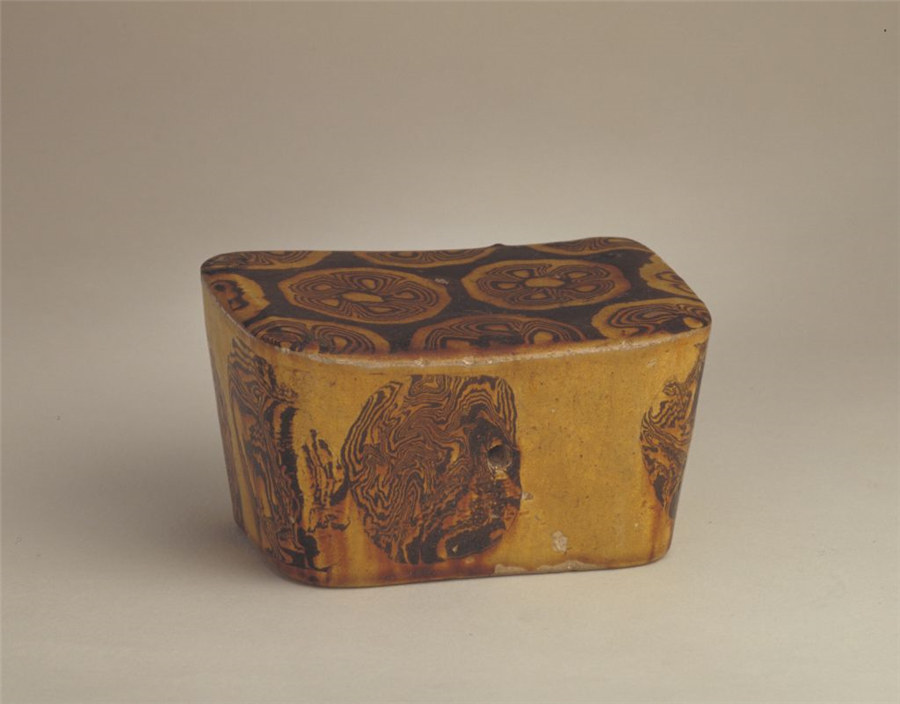
A marbled porcelain pillow from Gongyi Kiln in Henan province. This pillow has a small and compact design, with the front of the pillow being lower than the back. The pillow also features a ventilation hole on the front side. [Photo/Official website of the Palace Museum in Beijing]
During the Warring States period (475-221 BC), pillows in China presented a certain level of craftsmanship and delicacy. The earliest discovered physical artifact of a pillow in China was a wooden pillow unearthed in a Chu state tomb from this period in Jiangling city of Hubei province, which had primitive designs and simple decorations.
Another notable finding was a well-preserved lacquered wooden bed with a bamboo pillow found in a Chu tomb in Xinyang, Henan province.
Furthermore, significant advancements were made in the silk fabric manufacturing industry during the Warring States period, providing materials for soft pillows. Then silk pillows appeared in the Western Han Dynasty (206 BC-AD 24). From the Warring States period onward, hard and soft pillows became the two main types of sleeping aids.
During the Han Dynasty (206 BC-AD 220) and subsequent periods, pillow designs underwent innovations and gradually became more oriented toward the general populace, becoming more widely accessible and popular.
In ancient China, porcelain pillow, featuring the largest amount and most widely used kind of pillow, was first produced in Sui Dynasty (581-618), gained popularity in the Tang Dynasty (618-907) and experienced a flourishing period in the Song Dynasty (960-1279). Porcelain pillows were used as funeral objects in the beginning, but later they found utility as bedding and for pulse diagnosis.
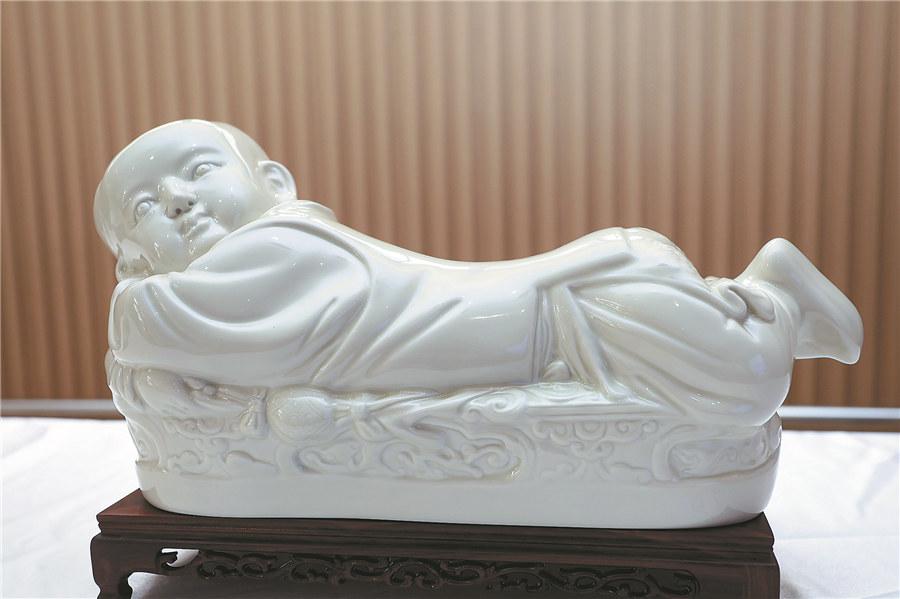
A white-glazed ancient pillow shaped like an infant lying on an elongated bed. This porcelain pillow is from the Northern Song Dynasty and is housed in the Palace Museum in Beijing. [Photo provided to China Daily]
During the Tang Dynasty, with the advancement of celadon ceramic production techniques, porcelain pillows became highly favored by people at that time, which provided a cool and refreshing surface during the summer. These pillows were often adorned with landscape paintings or poetry, showcasing their artistic value. Some porcelain pillows were even crafted in the shape of animals, symbolizing auspicious wishes.
The Song Dynasty witnessed the peak of porcelain pillow production, with a significant increase in size and production scale. New manufacturing techniques, designs, and decorations emerged, further enriching the aesthetic appeal of porcelain pillows.
There is a renowned porcelain pillow, currently housed in the Palace Museum in Beijing. It originates from the Ding kiln in the Northern Song Dynasty (960-1127) and is shaped like an infant lying in a prone position on an elongated bed. This pillow is considered one of the representative works of that era. It is entirely covered with white glaze, displaying a slightly yellow coloring and a smooth texture.
The shapes and decorative patterns of porcelain pillows directly or indirectly reflect various aspects of social life, culture, customs, fashion and pursuits of that time, greatly enriching the expressive and artistic qualities of porcelain pillows.
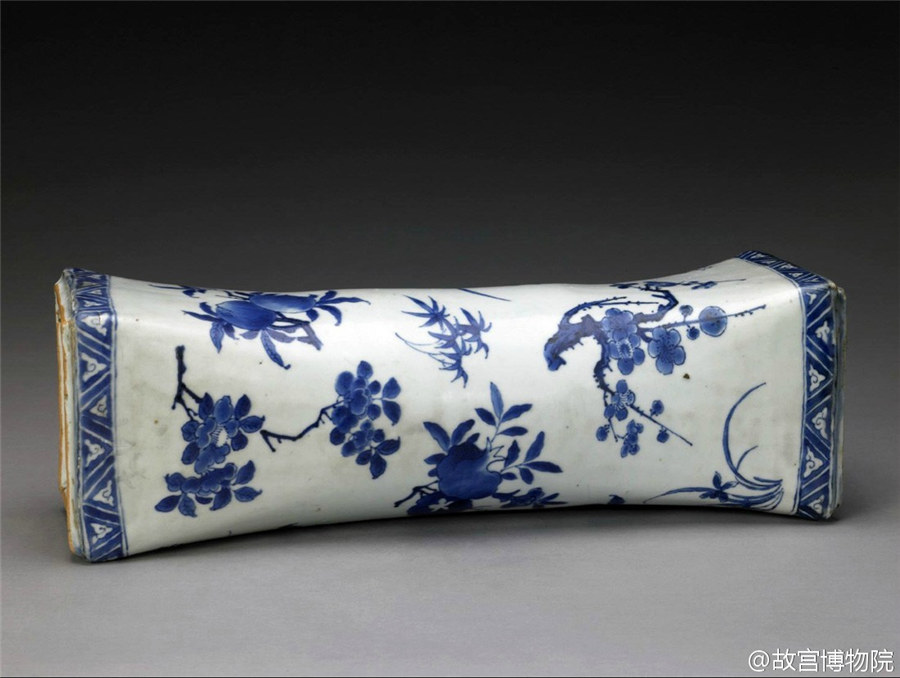
A blue-and-white porcelain pillow. [Photo/Official Weibo account of the Palace Museum in Beijing]
During the Yuan Dynasty (1279-1368), due to restrictions on the free development of the commodity economy, handicraft production, including pillow making, experienced a decline. However, the blue-and-white porcelain pillows from Jingdezhen in Jiangxi province showcased intricate carvings and meticulous craftsmanship, highlighting the enduring legacy of this art form.
During the Ming (1368-1644) and Qing (1644-1911) dynasties, the popularity of porcelain pillows waned, gradually giving way to the preference for softer pillows.
During this period, pillow designs became more diverse and various materials such as rattan, lacquer, jade, cloth, cotton and leather were used. Some cloth pillows were adorned with embroidered patterns on the surface, showcasing the artistry of Qing Dynasty folk embroidery.
Notably, some ancient pillows were crafted in the shape of a chest. These rectangular and hollow pillows featured storage space inside, giving rise to the saying "book hidden in a pillow" during ancient times.
With the advancement of technology, a wide variety of pillows have emerged, each offering different functions based on the materials used for filling. Today, Chinese pillows continue to be crafted with great care, combining traditional designs with modern materials to ensure a comfortable sleeping experience.
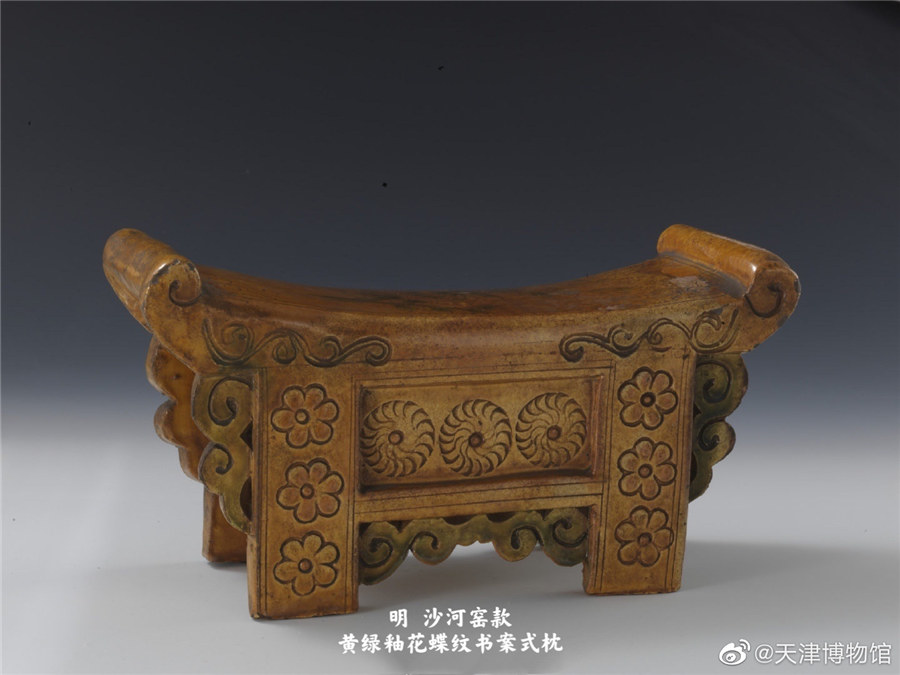
A yellow-green glazed pillow with floral and butterfly motifs in bookshelf style from the Ming Dynasty. [Photo/Official Weibo account of Tianjin Museum]
2. Stories about pillow
According to historical accounts, the renowned historian Sima Guang from the Northern Song Dynasty (960-1127) used a section of a round log as his pillow throughout his life. This unique pillow had a peculiar function: whenever Sima Guang moved slightly during his sleep, his head would slip off the pillow, causing him to wake up immediately and continue his studies. This particular type of pillow came to be known as an "alarm pillow".
The Chinese word for "pillow", zhentou, is believed to be coined by Cao Cao, a prominent strategist and ruler during the Three Kingdoms period (220-280). One night, while Cao Cao was reading in his military tent and becoming sleepy, there was no extra space available to place several books stored in wooden cases. In response, a servant improvised by placing the books at one side of the bed, upon which Cao Cao fell asleep quickly, experiencing a deep and restful slumber. Impressed by the comfort provided by this makeshift arrangement, the servant then created a padded headrest using soft materials, mimicking the shape of the wooden box that held the books. When Cao Cao inquired about the name of this new item, the servant referred to it as "headrest bedding". Cao Cao subsequently named it zhentou , and from that point on, the use of pillows became popular among the common people.
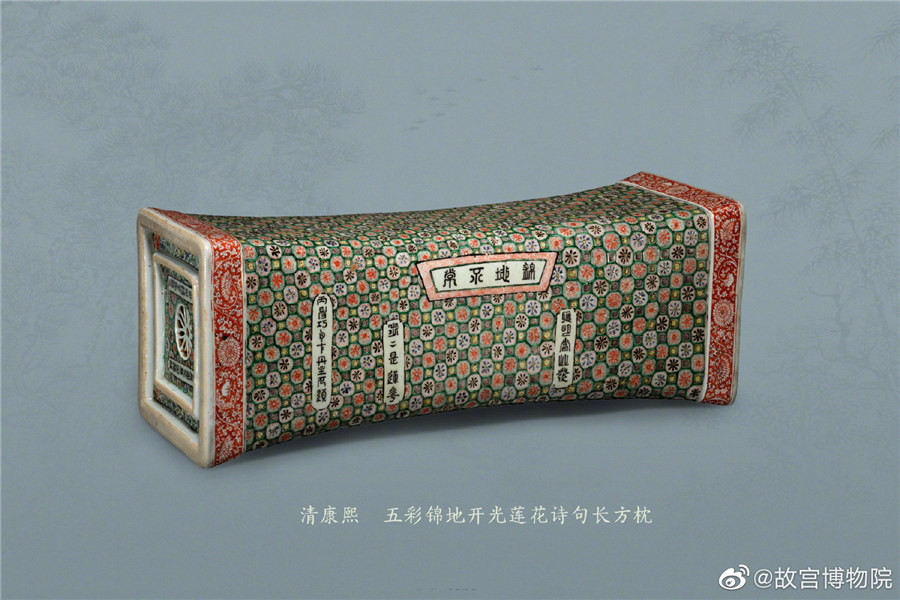
A rectangular pillow with colorful brocade, enlightened lotus flowers and poetry verses from the Kangxi Period of the Qing Dynasty. [Photo/Official Weibo account of the Palace Museum in Beijing]
3. Special functions of pillow
In addition to providing support for head and neck during sleep to make people sleep better, pillows also serve some other functions.
Keeping cool and maintaining hairstyles:
Porcelain pillows, despite their seemingly hard and elevated structure, were ideal for staying cool and refreshed during scorching summers. Additionally, they helped people maintain their hairstyles. In ancient China, both women and men had long hair and often wore intricate headwear. By placing pillows under their necks, they could prevent their hair from getting messy and avoid frequent hairstyling.
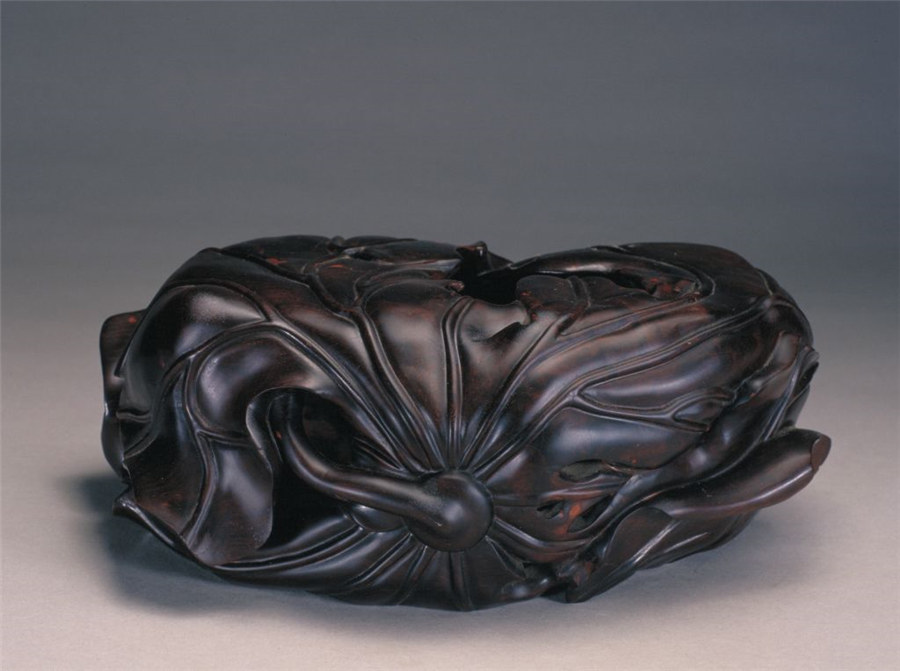
A rosewood carved lotus leaf pillow. There is a small hole carved on the pillow, resembling an insect borehole, providing a place for the sleeper to rest their ear when lying on the side. [Photo/Official website of the Palace Museum in Beijing]
Health benefits:
Pillows in ancient China not only served as sleep aids but also played a role in traditional medicine. Some pillows were specifically designed to relieve headaches, promote blood circulation, or alleviate neck and shoulder pain.
Herbal pillows with health functions have a long history in China, dating back to the Western Han Dynasty. These pillows were filled with herbs or medications and placed in direct contact with the head, providing preventive and curative effects against illnesses.
Examples of early discovered herbal pillows include the brocade pillow filled with herba eupatorii unearthed from the Mawangdui No 1 Han tomb and the silk pillow filled with pearls unearthed from the Nanyue King tomb.
According to ancient Chinese medical books of Qianjin Fang (Precious Prescriptions for Emergencies) and Ben Cao Gang Mu (Compendium of Materia Medica), tea leaves, autumn chrysanthemums, and mung beans were used as pillow fillings for their health benefits.
It is said that Empress Dowager Cixi would have people pick chrysanthemums during the autumn blooming season each year. After exposing them to the blazing sun, the dried flowers would be filled into pillows for bedding purposes.

A brown-glazed painted tiger-shaped pillow. The tiger's back serves as the pillow surface, with a white background and painting depicting autumn birds in a reed marsh. [Photo/Official website of the Palace Museum in Beijing]
Used in customs:
In the eastern part of Inner Mongolia autonomous region, as well as among some Inner Mongols in Heilongjiang, Jilin and Liaoning provinces, there is a custom of pillow grabbing during wedding ceremonies. Before the girl gets married, her parents would set up a new yurt to display the dowry. On the wedding day, the bride's family would send four strong men holding a wooden pillow that is over 1 meter long to walk toward the new yurt. At the same time, four men from the groom's side would advance to snatch the pillow. A spirited fight would ensue between the two sides, with neither party willing to let go of the wooden pillow, until they all become exhausted. Eventually, the big pillow is placed on the bed, signifying the end of this part of the ceremony.
At the weddings of Bai ethnic group, there is a tradition of fighting over the pillow in the bridal chamber. The newlyweds would compete to sit on the pillow, as it is believed that whoever sits on the pillow will become the head of the household.
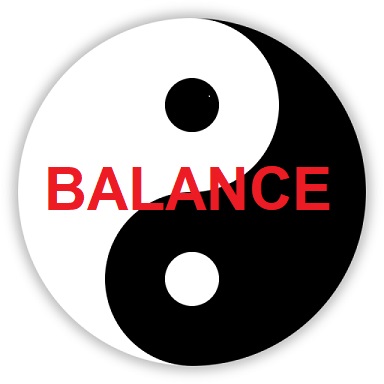
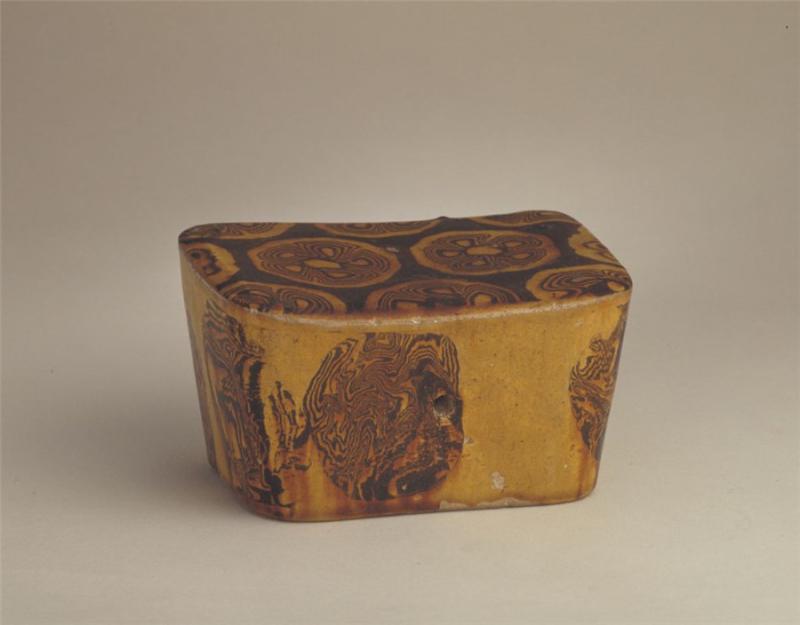

Comments are subject to the Discovery Group RED BOX RULES which can be accessed by clicking on this link -> or by clicking on the Discovery Group avatar located at the too right of the article page above, either of which will open the Discovery Group home page.
Political comments are off topic and will be deleted
When it comes to sleeping, I think I prefer the pillows I have on my bed.
They look great but I can't imagine sleeping on one.
I think it's a safe bet to say they didn't have pillow fights back then (except the kind described in the article)..
The objects are beautiful, but as a place to rest my head... ?
I'm with you on that.